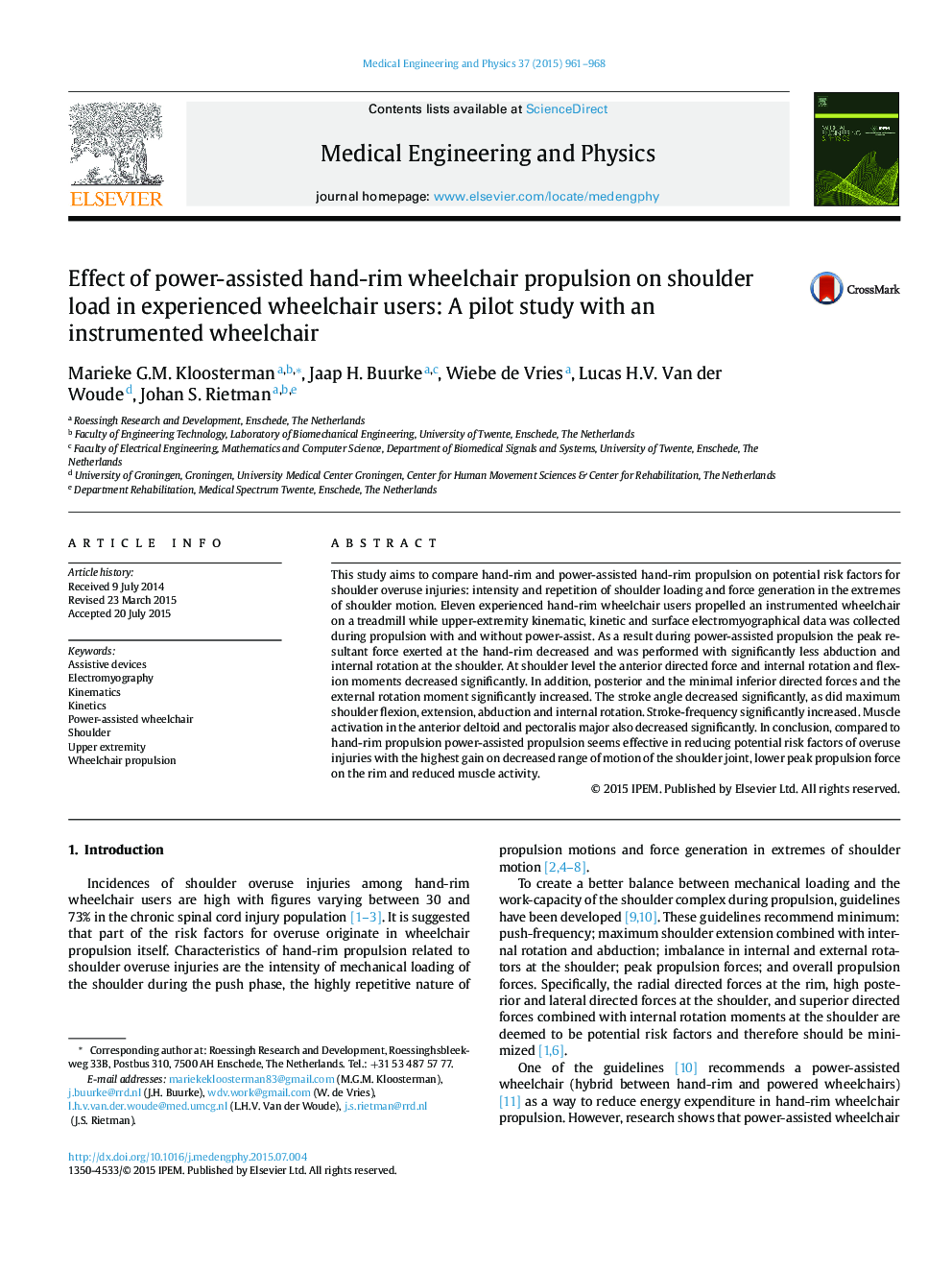| Article ID | Journal | Published Year | Pages | File Type |
|---|---|---|---|---|
| 875715 | Medical Engineering & Physics | 2015 | 8 Pages |
•Comparison between hand-rim and power-assisted hand-rim propulsion while propelling on a treadmill.•Power-assisted wheelchair propulsion is effective in reducing potential risk factors of shoulder overuse injuries: intensity of shoulder loading, shoulder angles during force generation, shoulder range of motion and intensity of muscle activation.•The prescription of a power-assisted wheelchair seems to be indicated for subjects developing overuse injuries due to hand-rim propulsion or subjects with difficulties driving a hand-rim wheelchair primarily due to lack of upper-extremity power.
This study aims to compare hand-rim and power-assisted hand-rim propulsion on potential risk factors for shoulder overuse injuries: intensity and repetition of shoulder loading and force generation in the extremes of shoulder motion. Eleven experienced hand-rim wheelchair users propelled an instrumented wheelchair on a treadmill while upper-extremity kinematic, kinetic and surface electromyographical data was collected during propulsion with and without power-assist. As a result during power-assisted propulsion the peak resultant force exerted at the hand-rim decreased and was performed with significantly less abduction and internal rotation at the shoulder. At shoulder level the anterior directed force and internal rotation and flexion moments decreased significantly. In addition, posterior and the minimal inferior directed forces and the external rotation moment significantly increased. The stroke angle decreased significantly, as did maximum shoulder flexion, extension, abduction and internal rotation. Stroke-frequency significantly increased. Muscle activation in the anterior deltoid and pectoralis major also decreased significantly. In conclusion, compared to hand-rim propulsion power-assisted propulsion seems effective in reducing potential risk factors of overuse injuries with the highest gain on decreased range of motion of the shoulder joint, lower peak propulsion force on the rim and reduced muscle activity.
